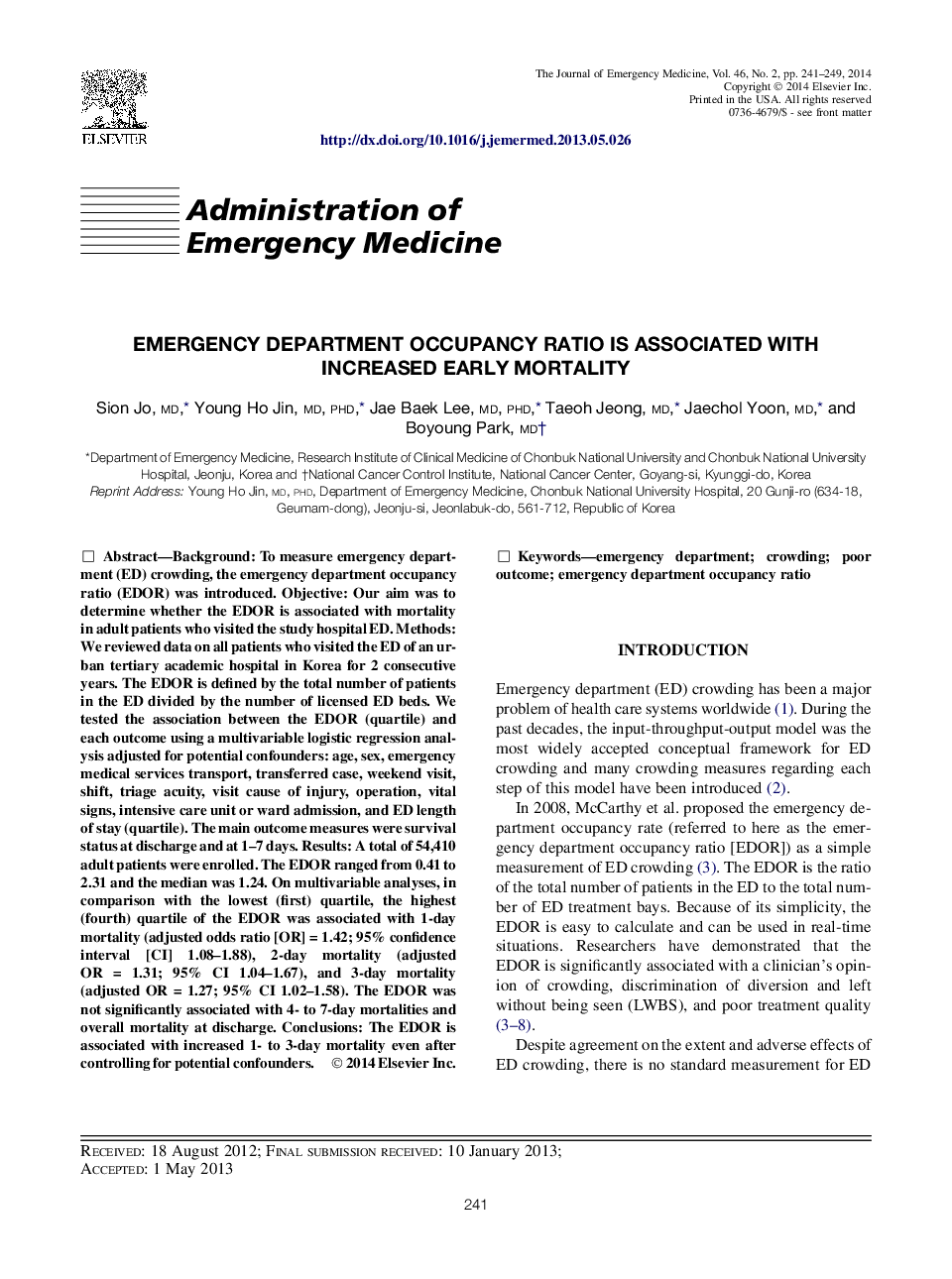| کد مقاله | کد نشریه | سال انتشار | مقاله انگلیسی | نسخه تمام متن |
|---|---|---|---|---|
| 3247959 | 1589140 | 2014 | 9 صفحه PDF | دانلود رایگان |
BackgroundTo measure emergency department (ED) crowding, the emergency department occupancy ratio (EDOR) was introduced.ObjectiveOur aim was to determine whether the EDOR is associated with mortality in adult patients who visited the study hospital ED.MethodsWe reviewed data on all patients who visited the ED of an urban tertiary academic hospital in Korea for 2 consecutive years. The EDOR is defined by the total number of patients in the ED divided by the number of licensed ED beds. We tested the association between the EDOR (quartile) and each outcome using a multivariable logistic regression analysis adjusted for potential confounders: age, sex, emergency medical services transport, transferred case, weekend visit, shift, triage acuity, visit cause of injury, operation, vital signs, intensive care unit or ward admission, and ED length of stay (quartile). The main outcome measures were survival status at discharge and at 1–7 days.ResultsA total of 54,410 adult patients were enrolled. The EDOR ranged from 0.41 to 2.31 and the median was 1.24. On multivariable analyses, in comparison with the lowest (first) quartile, the highest (fourth) quartile of the EDOR was associated with 1-day mortality (adjusted odds ratio [OR] = 1.42; 95% confidence interval [CI] 1.08–1.88), 2-day mortality (adjusted OR = 1.31; 95% CI 1.04–1.67), and 3-day mortality (adjusted OR = 1.27; 95% CI 1.02–1.58). The EDOR was not significantly associated with 4- to 7-day mortalities and overall mortality at discharge.ConclusionsThe EDOR is associated with increased 1- to 3-day mortality even after controlling for potential confounders.
Journal: The Journal of Emergency Medicine - Volume 46, Issue 2, February 2014, Pages 241–249
